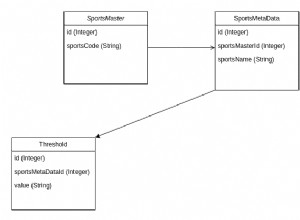Esta es una forma muy ineficiente de hacerlo. Puedes usar merge declaración y luego no hay necesidad de cursores, bucles o (si puede prescindir) PL/SQL.
MERGE INTO studLoad l
USING ( SELECT studId, studName FROM student ) s
ON (l.studId = s.studId)
WHEN MATCHED THEN
UPDATE SET l.studName = s.studName
WHERE l.studName != s.studName
WHEN NOT MATCHED THEN
INSERT (l.studID, l.studName)
VALUES (s.studId, s.studName)
Asegúrate de commit , una vez completado, para poder verlo en la base de datos.
Para responder realmente a su pregunta, lo haría de la siguiente manera. Esto tiene la ventaja de hacer la mayor parte del trabajo en SQL y solo se actualiza según el ID de fila, una dirección única en la tabla.
Declara un tipo, en el que coloca los datos de forma masiva, 10 000 filas a la vez. Luego procesa estas filas individualmente.
Sin embargo, como digo, esto no será tan eficiente como merge .
declare
cursor c_data is
select b.rowid as rid, a.studId, a.studName
from student a
left outer join studLoad b
on a.studId = b.studId
and a.studName <> b.studName
;
type t__data is table of c_data%rowtype index by binary_integer;
t_data t__data;
begin
open c_data;
loop
fetch c_data bulk collect into t_data limit 10000;
exit when t_data.count = 0;
for idx in t_data.first .. t_data.last loop
if t_data(idx).rid is null then
insert into studLoad (studId, studName)
values (t_data(idx).studId, t_data(idx).studName);
else
update studLoad
set studName = t_data(idx).studName
where rowid = t_data(idx).rid
;
end if;
end loop;
end loop;
close c_data;
end;
/




